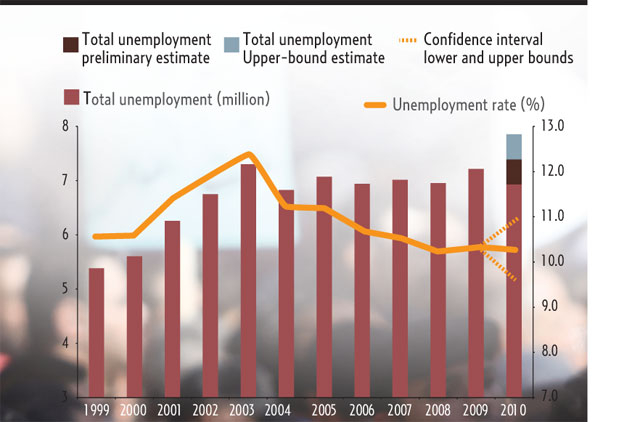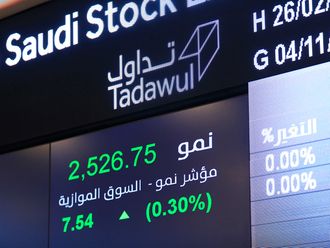
Dubai: The Middle East's unemployment rate is the highest in the world, new figures from the International Labour Organisation (ILO) revealed yesterday.
The ILO report, Global Employment Trends 2011, said current estimates for 2010 show a 10.3 per cent level of unemployment in the region. The youth unemployment rate is almost four times the adult rate.
The outlook for 2011 is also bleak with economic growth projected at 5.1 per cent — short of pre-crisis trends — and little change is expected in the unemployment rate over the next 12 months.
The report, which said the downward trend in regional unemployment was interrupted by the global economic crisis, comes as protests continue in several countries across the Arab world, including Tunisia, Algeria and Egypt, over rising unemployment and sharp rises in food prices.
Gender inequalities
Gender inequalities also continue to be a concern in the Middle East as the gap between male and female employment-to-population ratios, at 47.2 percentage points, is twice the global average. Philippe Dauba-Pantanacce, Senior Economist for Global Markets, Middle East and North Africa at Standard Chartered Bank, said unemployment was a major issue. "Most Gulf countries have a high GDP/capita ratio and a fairly small population, which gives Gulf states the fiscal space to compensate for this situation. But a lot of less well off countries in the region do not have that luxury; they have bigger populations and a much more constrained fiscal space," he said.
"The priority for both oil and non-oil producing countries is to foster enough growth to absorb the big amounts of new entrants on the job market each year. The stake lies both in the ability to create sectors that are labour intensive and in the education system that needs to equip students with skill sets in line with market expectations. There is a substantial margin of progression in this area," he added.
The number of people unemployed globally stood at 205 million in 2010, essentially unchanged from the previous year, but 27.6 million higher than in 2007. The global unemployment rate stood at 6.2 per cent in 2010, against 6.3 per cent in 2009, and well above the rate of 5.6 per cent in 2007.
The International Monetary Fund said yesterday that it will take "many years" for job markets in the United States and Europe to recover from the effects of the global financial crisis, as it revised its global outlook from 4.2 per cent to 4.4 per cent.
Monica Malik, Chief Economist at EFG-Hermes, said: "Across the region, the big issue facing economies and policymakers is how to create jobs and absorb new entrants into the market. This has been an underlying problem in the Middle East for quite some time; it is not something new and it is one of the biggest challenges facing the region.
"The skill sets produced by education systems do not meet private sector requirements, which in some cases reflects the high level of expatriate workforce."













